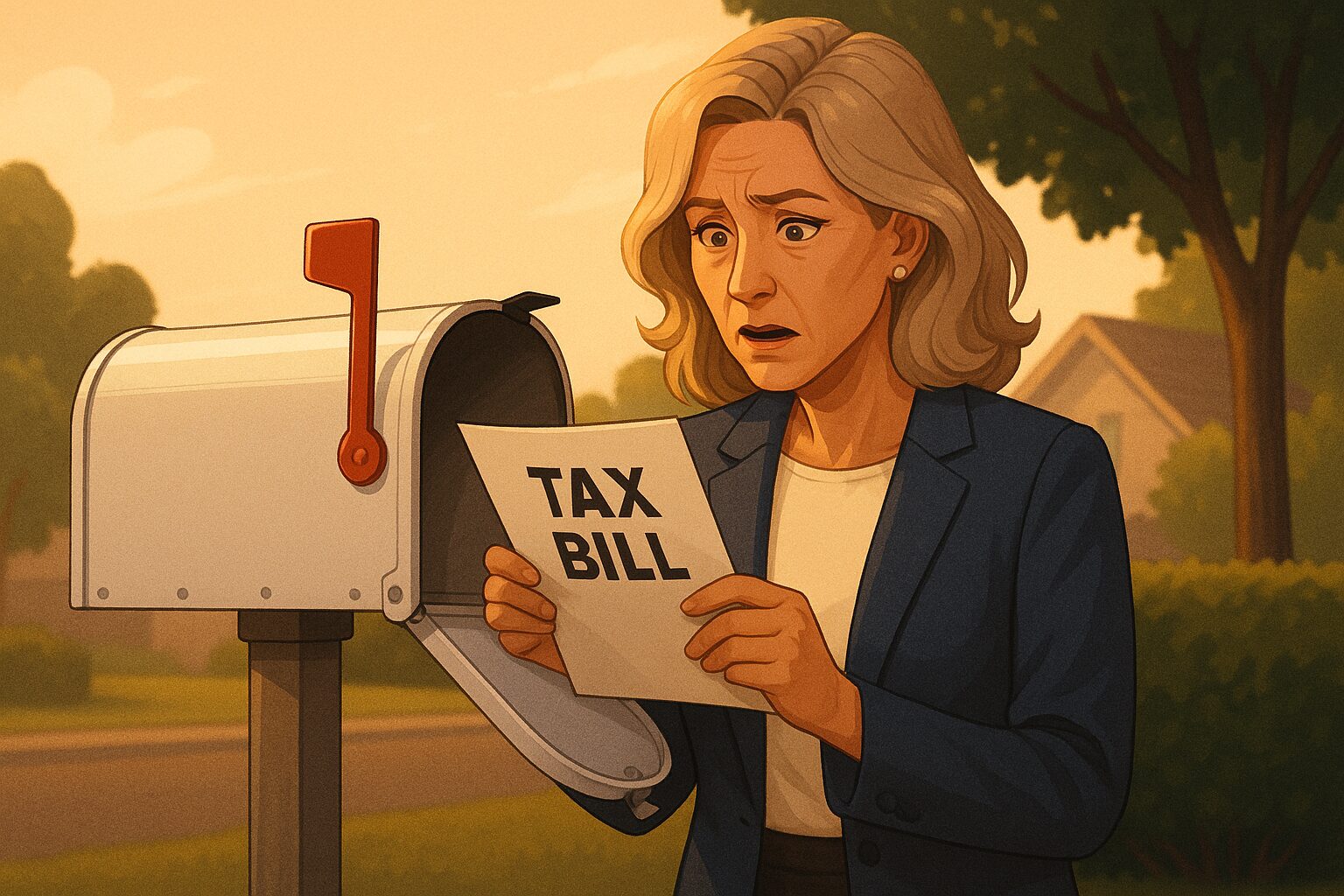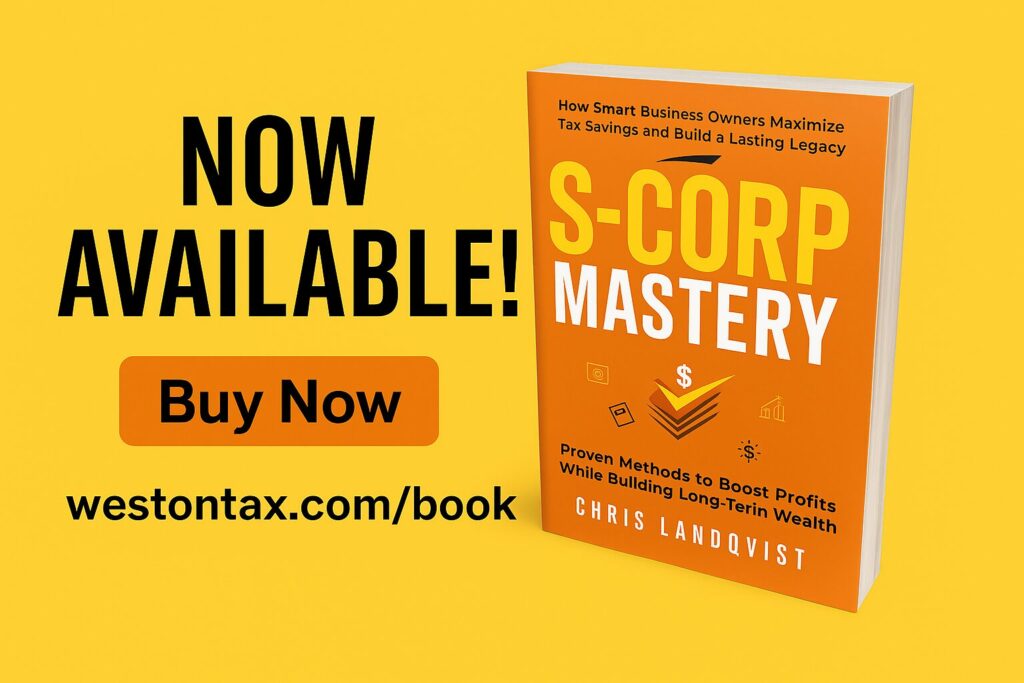Taxes change a little every year, and those “little” changes can add up to real money. In 2025, the standard deduction and tax bracket thresholds went up, retirement plan limits shifted, and health account limits moved too.
If you own a small or mid-sized business — whether you’re a single-member LLC, a Partnership, or an S-Corp — these numbers shape how you set your paycheck, when you take profit, and how much you can save in tax-favored accounts.
This guide explains what changed, why it matters, and the simple moves that help you keep more of what you earn — all in everyday language, with real examples and credible sources.
Why This Matters Now
Think of the tax code like a set of guardrails. The guardrails move each year with inflation. If you keep driving using last year’s map, you’ll bump the rails and lose money. By adjusting your paycheck deferrals, your salary as an owner-employee, and your timing for income and deductions, you can turn those guardrails into a smooth lane.
The most important guardrails for 2025 are the standard deduction and the bracket thresholds, the limits for retirement plans like 401(k)s and IRAs, the cap for Social Security wages, and the annual limits for HSAs and FSAs. The IRS and SSA publish these updates each fall.
For 2025, the standard deduction is $15,000 for single filers, $30,000 for married filing jointly, and $22,500 for heads of household. Those amounts are baked into every paycheck and return, so they’re the first place to look for savings.
The Basic Frame: How Brackets and Deductions Work
Your standard deduction works like a coupon you use before the IRS calculates your tax. The coupon got bigger in 2025, which means the part of your income that gets taxed got smaller. On top of that, tax is charged in layers called brackets.
The IRS has confirmed the seven bracket system stays put for 2025 and shifted each layer up a bit with inflation. That means more of your income stays in lower brackets compared with 2024.
If you’re a W-2 earner only, those two changes might show up as a little more in each paycheck. If you’re a business owner, those same changes help you decide how much salary to take versus how much profit to leave in the company or distribute.
Entity Type Changes Your Playbook
An LLC is a legal wrapper. For taxes, it can be treated several ways. A single-member LLC is usually taxed like a sole proprietorship. A multi-member LLC is usually taxed like a partnership. You can also elect to have an LLC taxed as an S-Corp or even a C-Corp. Each path changes how money flows and how payroll taxes apply.
If you operate as a sole proprietor or an LLC taxed as a sole proprietorship, you don’t take a W-2 paycheck from your own business. You pay income tax on your net profit and you pay self-employment tax on that profit. In an S-Corp, you wear two hats. You’re both an owner and an employee.
You pay yourself a reasonable W-2 salary and you may take additional profit as distributions. The salary is subject to payroll taxes; the distributions are not. Because payroll taxes sit on top of income taxes, the line between “salary” and “distribution” is where much of the strategy lives.
The Social Security “cap” That Shapes Your Salary
Social Security tax only applies to wages up to a yearly cap called the contribution and benefit base. For 2025, that cap is $176,100. Wages above that cap don’t face the 6.2% Social Security tax, though Medicare continues. If you’re setting your S-Corp salary, this cap is a key reference point when timing bonuses or adjusting compensation late in the year. You can read more about this “cap” here: Social Security
Picture this in practice. If you set your salary at $160,000 and later decide to add a $30,000 bonus in December, only the first $16,100 of that bonus would still be hit by Social Security tax.
The rest avoids Social Security, though it still faces Medicare and income tax. This is not a green light to pay yourself too little. It’s a way to coordinate pay with the real rules so you don’t overspend on payroll tax.
The 401(k) Engine For Owner-Employees
Retirement plans do double duty. They help you save for the future and they shrink your current tax bill. For 2025, employee deferrals into a 401(k), 403(b), most 457 plans, and the TSP increased to $23,500. If you’re age 50 or older, your catch-up contribution remains $7,500. And there’s a special, higher catch-up for ages 60 to 63 that jumps to $11,250 in 2025.
As an owner, you also control the employer side. Between your employee deferral and your company’s contribution or match, your total 401(k) plan additions sit under a separate, larger ceiling. The IRS raised the overall defined contribution plan limit to $70,000 in 2025.
That’s the combined total of employee deferrals, employer match, profit sharing, and certain after-tax contributions if your plan allows them. This higher ceiling is one reason many owners choose an S-Corp with a strong 401(k) design.
IRAs are part of the picture too. For 2025, the IRA contribution limit remains $7,000, with a $1,000 catch-up for age 50 and older. Income phase-outs for deducting traditional IRA contributions and for making Roth IRA contributions moved up as well.
If you’re deciding between pretax and Roth, a simple rule of thumb is this: if your current bracket is likely higher than your expected bracket in retirement, pretax often wins; if your current bracket is lower, Roth may be better. The right answer depends on cash flow, other savings, and your long-term plans.
HSAs and FSAs: Medical Dollars With Extra Horsepower
A Health Savings Account is one of the most powerful tools in the code because it offers a triple tax advantage: deductible or pretax contributions, tax-free growth, and tax-free withdrawals for qualified medical expenses.
In 2025, the HSA contribution limit is $4,300 for self-only coverage and $8,550 for family coverage, with a $1,000 catch-up if you’re 55 or older. You need to be enrolled in a qualifying high-deductible health plan to use an HSA.
A health FSA is different. You don’t need a high-deductible plan, and the money is “use it or lose it” with some plans allowing a small carryover. For the 2025 plan year, the health FSA employee contribution limit is $3,300, and the maximum carryover (if your employer plan allows it) is $660.
FSAs reduce income tax and payroll tax because contributions come out of your paycheck before those taxes are applied. HSAs and FSAs can work together in certain limited designs, but most people will use one or the other.
Common Traps And How To Avoid Them
The first trap is paying yourself too little in an S-Corp. “Reasonable compensation” is not a guess; it’s a documented process. Cutting your salary to avoid payroll tax looks good short term but raises audit risk and penalties.
The second trap is missing plan deadlines. Retirement plans have setup dates, amendment dates, and testing requirements. Missing one can limit or even erase your intended deduction.
The third trap is forgetting the overall plan limit. Hitting the $23,500 deferral is great, but leaving employer contributions on the table gives up deductions you could have taken. The IRS raised the overall limit to $70,000 for a reason… use it if it fits your cash flow.
Another common mistake is mixing personal and business expenses. Clean books make it easier to choose the right entity and the right pay structure. They also make your tax filing smoother and faster.
A final trap is trying to time everything in December. Tax planning works best when you make small, steady moves all year. Updating your payroll deferrals in January beats a mad scramble at year-end.
A simple, year-round rhythm
Start the year by setting your paycheck deferral so you hit the 2025 target by December. If you’re an owner-employee, tie your salary plan to the Social Security cap and to the reality of your workload. In spring and summer, check cash flow and decide whether to increase employer contributions.
In fall, review capital gains plans, harvest losses if needed, and confirm you’re on track with HSAs or FSAs during open enrollment. Close the year with a final pass on bonuses, distributions, and estimated taxes so nothing catches you off guard. This rhythm takes less time than you think and keeps you inside the guardrails.
What Good Strategy Looks Like
Good strategy is simple, legal, and well-documented. You pick an entity that fits your work and goals. You pay yourself fairly. You use the 401(k), IRA, HSA, and FSA limits the IRS gives you for 2025. You line up big moves (like selling a property or a block of stock) so the gains fall into the best possible bracket.
And you put it in writing. When you do that, the numbers start to stack in your favor. Standard deduction increases mean more take-home. Higher plan limits mean bigger deductions or more tax-free growth. The Social Security cap helps you tune, not game, your pay.
Over time, this steady method turns tax savings into working capital for your business and your life.
Ready To Put This To Work
If you’re a busy owner, you don’t need to master every rule. You need a plan that fits your business, your cash flow, and your goals. That plan starts with the right entity choice and continues with the right salary and savings mix.
If you’d like a second set of eyes on your numbers, I’m happy to help you map a clear, legal, step-by-step path to keep more in 2025 and beyond.
Welcome to the New Age of Accounting. Let’s begin.
P.S. If you found this article helpful, you’ll love my new book S-Corp Mastery: How Smart Business Owners Maximize Tax Savings & Build a Lasting Legacy. It’s now live and available in a sleek, easy-to-read PDF version. Grab your copy here

Chris is the Managing Partner at Weston Tax Associates, a best-selling author, and a renowned tax strategist. With over 20 years of expertise in tax and corporate finance, he simplifies complex tax concepts into actionable strategies that drive business growth. Originally from Sweden, he now lives in Florida with his wife and two sons.









